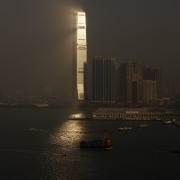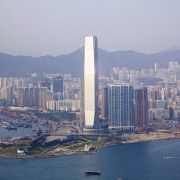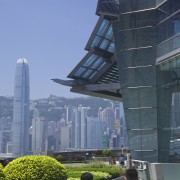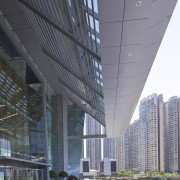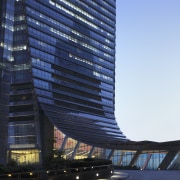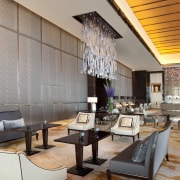Bridging the divide - ICC tower in Hong Kong links city in more ways than one
ICC tower in Hong Kong links city in more ways than one
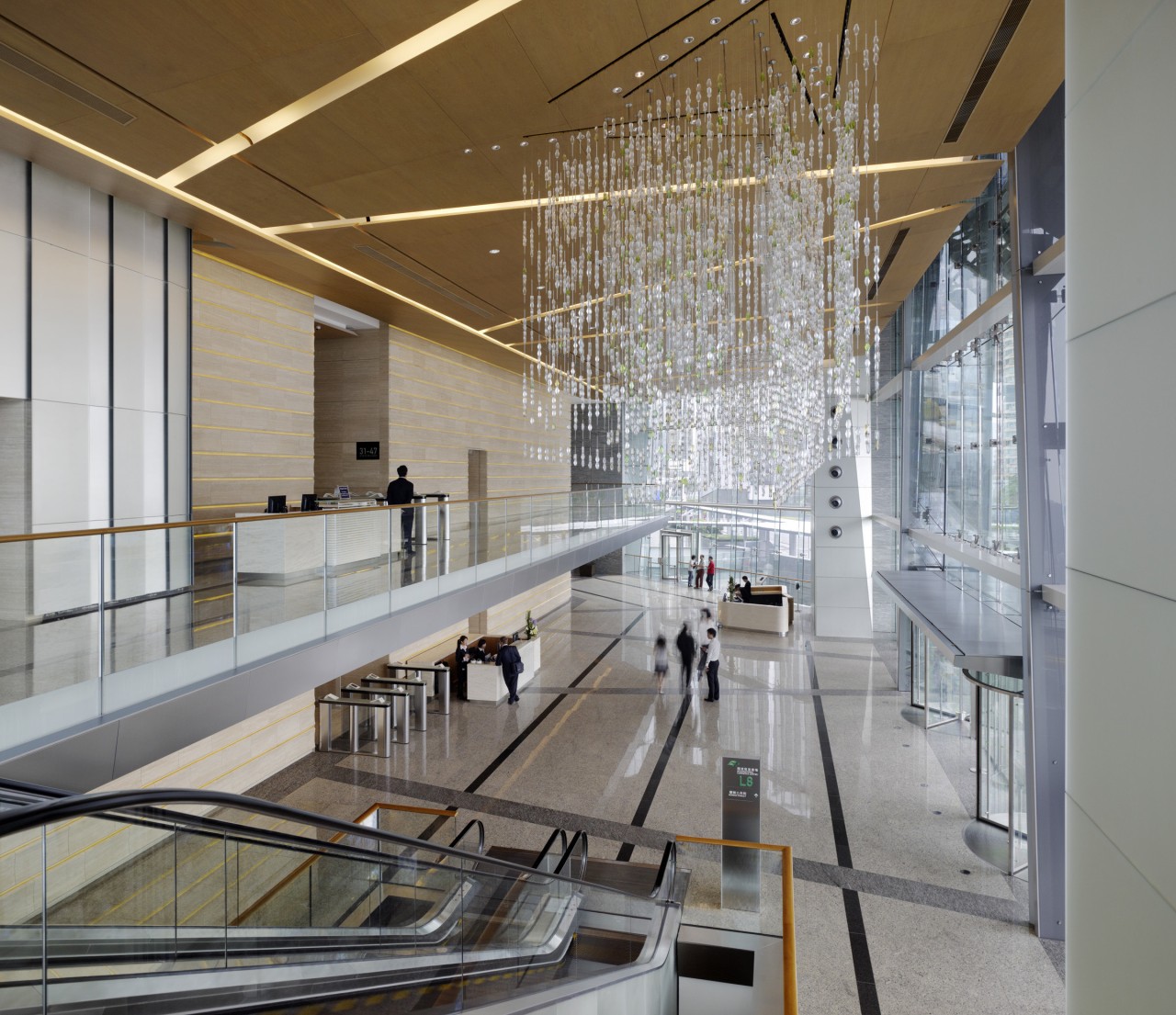
The iconic image of twin lighthouses on opposite sides of Hong Kong's Victoria Harbour is a defining concept behind the development of the tallest building in Hong Kong.
But the sense of connection between the two key business districts is underlined more literally by transportation links the new 118-storey International Commerce Centre (ICC) on the tip of Kowloon Peninsula is directly linked by subway to the CBD on Hong Kong Island.
Architectural firm Kohn Pedersen Fox (KPF) was charged with bridging the divide, and this was achieved by means of expressive formal gestures and innovative technologies, which connect the tower with the city's mass transit infrastructure.
The new tower, which incorporates the world's highest hotel, The Ritz-Carlton, Hong Kong, is the centrepiece of the Union Square reclamation project. This includes a new mixed-use urban centre, recreation spaces, and Kowloon Station a new transportation hub that connects Hong Kong to Chek Lap Kok airport.
KPF says the tower's significance extended to the need to create a sustainable paradigm, in which individual buildings would form part of a larger ecosystem of vertical centres linked by horizontal networks of public transportation.
To reinforce this sense of connection, the tower's chiselled facade peels off near the base to enclose a soaring atrium, often referred to as the dragon tail. The atrium, which is a dramatic gesture towards the centre of the Union Square development, serves as the public face of the tower. It also connects to Kowloon Station through a retail mall.
On the exterior, the dragon tail facade is expressed as a series of overlapping shingles that reflect the light, with tilted panels creating a kaleidoscopic effect. The splayed curves and the tower's subtly tapered re-entrant corners also designed to deflect wind and optimise the structural performance visually anchor the building to its surroundings. At the same time, the curves create sheltering canopies on the other three sides of the tower base.
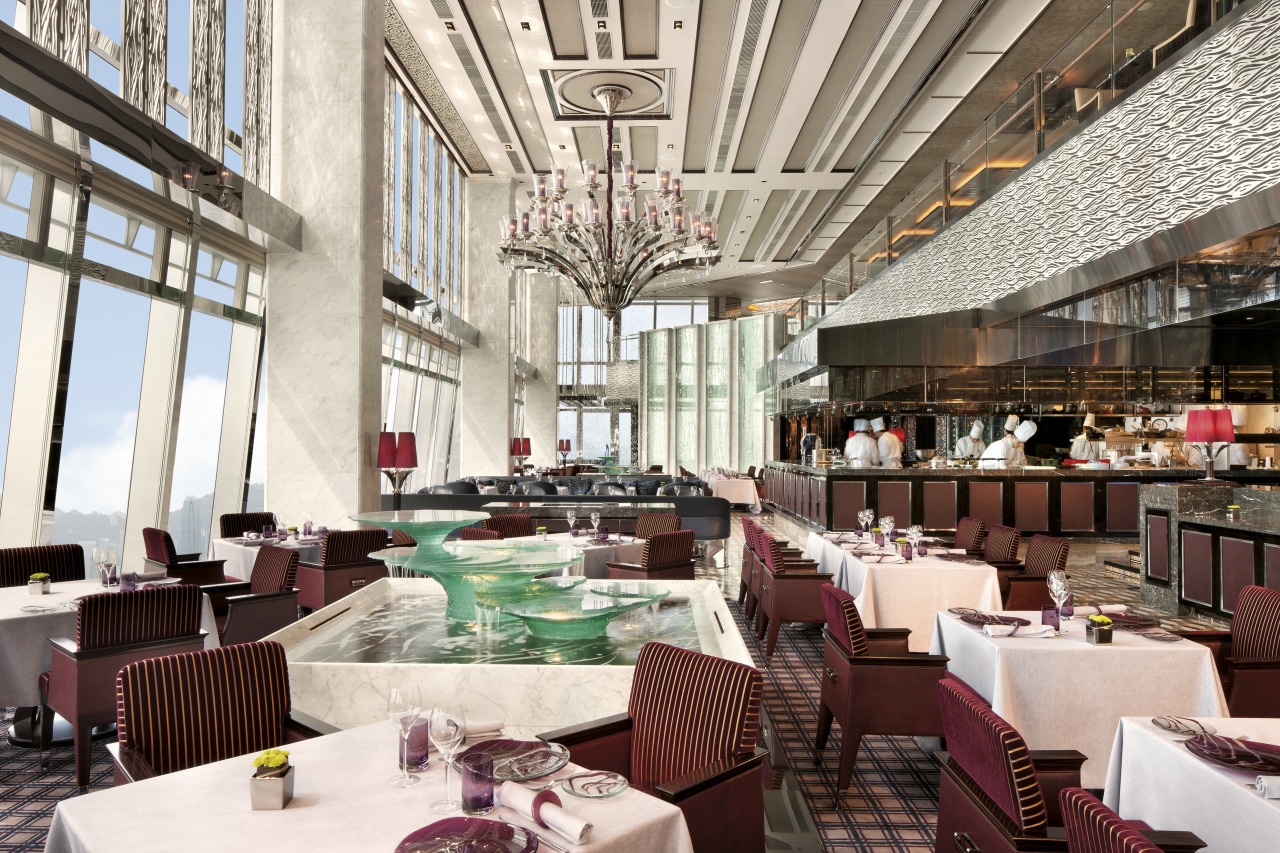
Other features of the atrium include a giant LED screen suspended from the ceiling. The screen, custom designed by Traxon, provides a display area for art installations, moving images or advertising. Passers-by get a dynamic glimpse of the display screen through the large windows.
The building is also notable for its sustainable design initiatives, which include the Energy Optimizer, an air conditioning system developed in conjunction with Hong Kong Polytechnic University. With its central intelligent control, the systemconstantly monitors and analyses energy use to ensure the most energy-efficient operation.
Other sustainable design features include an elevator passenger smart card system that maximises the efficiency of the vertical transportation, minimising waiting times and wasteful starting and stopping. The tower is also designed to save water by harvesting condensed water from the air conditioning units for use elsewhere.
The building provides 232,252m² of Grade A office space, with each office floor containing approximately 2229m² of rentable area organised around a central core. This is slightly offset to maximise views across the harbour. ICC has already attracted a number of anchor tenants, including investment banks Morgan Stanley, Deutsche Bank and Credit Suisse, as well as ING, Citic Bank International, ABN Amro Bank and EFG Bank.
The Ritz-Carlton, Hong Kong entrance is located on the 9th floor, while the hotel itself extends from floors 102 to 118. As the highest storey hotel in the world, the 312-room hotel has 360° views of the entire city and surrounding islands. Not surprisingly, Ritz-Carlton's signature refined luxury is also taken to new heights, with an Urban Living design theme.
Designed by LTW Designworks, the interior was inspired by Hong Kong's dynamic contrasts as a city at the crossroads of East and West. LTW Designworks partner Teo Su-Seam says the design language creates an abstract yet seamless tale of modernity and tradition, set against a backdrop of stately opulence.
"Throughout the hotel, modern interpretations of traditional Chinese fittings and art convey a distinctive style that is both familiar and inviting," she says. "To instil a sense of warmth and intimacy, and to demarcate areas in the larger public spaces, hand-tufted wool and silk cartographic carpets in jewelled and earthy tones feature extensively."
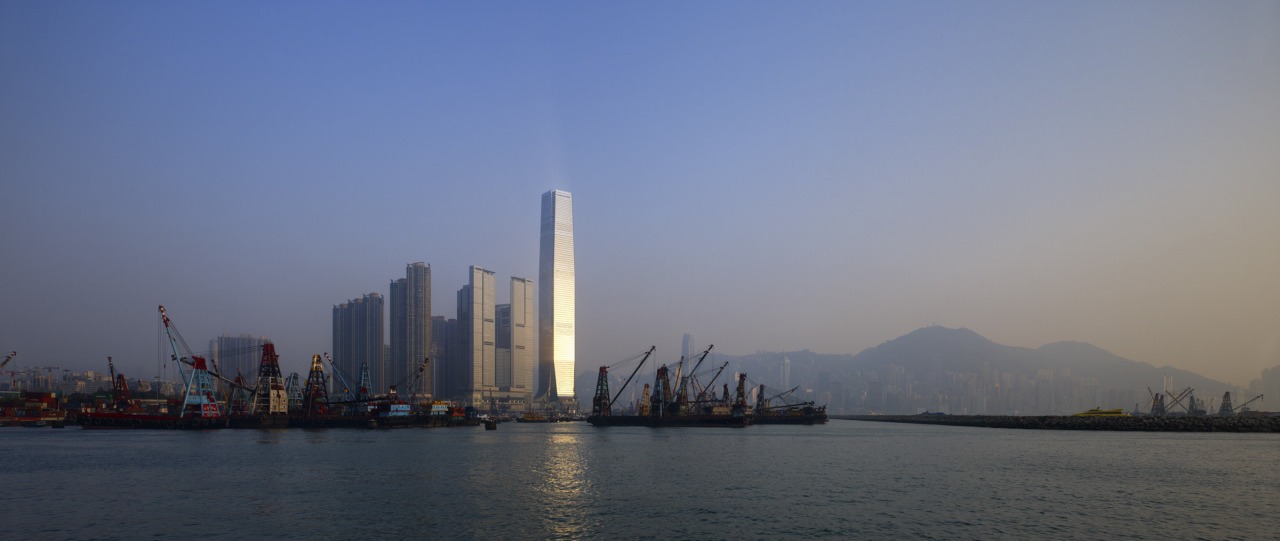
Key public spaces include the main reception lounge on the 103rd floor, which has a soaring 8m-high atrium of gleaming marble. A more intimate check-in reception area also features on this floor. This is dominated by a hand-sculpted marble counter, organic motifs and timber walls padded with a faux antique-gold snakeskin leather.
"The hotel has a 930m² ballroom, graced by a dazzling sea of chandeliers, grand lacewood doors and accent walls in textured leather and marble," says Teo.
The Chocolate Boutique is another defining public space, where guests can enjoy the Ritz-Carlton's signature afternoon tea. This lounge combines classic lines and graceful curves with a disciplined modern edge. The main wall features a fretwork of antique bronze in different finishes.
"Its grid-like pattern is a subtle tribute to the sprawling urbanscape that the lounge overlooks," says Teo.
The hotel's design theme is carried through to the guest rooms and suites, which all offer extensive harbour or city views, refined comfort and high-end modern amenities.
Credit list
Client
Interior designer Ritz-Carlton
Mechanical and electrical engineer
Fire safety engineer
Landscape consultant
Fire contractor
Hotel public areas contractor
Drapes
Bathroomware
Veneers
Building architect
Structural and civil engineer
Quantity surveyor
Main contractor
Hotel guestroom contractor
Paints and varnishes
Lighting
Flooring
Reception furniture
Story by: Colleen Hawkes

Plantation Bamboo
Bamboo X-treme Cladding
Home kitchen bathroom commercial design
Yellow wattle blooming
Cottagy entwines contemporary
Nature infused



